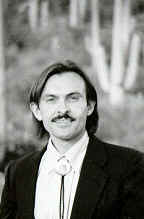Indigenous Amazonians rely upon the dreams of dogs to gain information about their environment according to Eduardo Kohn (2007). Kathy Rudy (2012) has written about the need for all of us (not just indigenous people) to incorporate what she calls "post-humanism becoming animal". The goal is not to teach animals to speak human languages, but to develop richer understanding of their world and to participate more fully in that world. She calls this "post-human studies". She says that one of its central projects is to chase down the mystery of communication between organism and environment, and to detail how humans are a part of nature, not above it or beyond it. Post-human, animal studies strives to underscore the connectedness between organisms and environment.
Most impressive to me is the work of Professor Con Slobodchikoff of Northern Arizona University, who has spent his career learning the language of prairie dogs. He presents prairie dogs with identifiable stimuli, such as people or dogs, and records their chirps, using acoustic software to deconstruct the sounds. He has found that prairie dogs chirps can differentiate a human female wearing blue, who is thin and tall, from one wearing green, from one who is heavy, from one who is short. I was amazed at the degree to which prairie dogs can communicate these differences in perception to other prairie dogs. Slobodchikoff writes that there are so many more utterances than he can decode, because they seem to be social and relational, unrelated to external events he can manipulate. His amazing you tube video is available at http://youtu.be/y1kXCh496U0.
Slobodchikoff's research shows that prairie dogs have, at least to some degree, similar conversations as to humans, and very different from what has been previously assumed by mainstream thinkers about animal communication. Sue Savage-Rumbaugh has shown that Great Apes teach each other skills of enhanced communication. Alexandra Horowitz proclaims that dogs understand us much better than we understand them. Of course, who hasn't heard of Rupert Sheldrake's studies of dogs who know when their owners are coming home. In a book of that name, Sheldrake reported his studies of randomly telling dog owners to head home during the work day, sometimes reversing their journey mid-way, and sending them by different, random routes that could not be anticipated by the dogs. Using activity monitors on the dog, he could reliably show that the dogs knew when their owners reached a certain distance from home. Thus, dogs are more sensitive to humans coming home than probably humans are to dogs coming home.
Dawn Prince-Hughes argues that her autism makes her sensitive to other forms of communication, which so-called normal humans might miss. She writes, "It is clear to me that not only do apes have a language that is complex and holistic, but by communicating with us, they illustrate that it may be we who are less skilled at the art of sharing true subjective experience." (p.126; in Rudy]. Cross-species communication is not solely a matter of animals learning how to talk to us, but also our learning the language of animals as is being done in the prairie dog example.
The purpose of the winter buffalo ceremony was to communicate with the game animals about the need for them and to invite them into the bodies of human dancers so that they could be part of the dialogue in which some of them would agree to sacrifice themselves for the benefit of the humans. In the dance, the humans become the animals. Masks and costumes aid that transformation. The ceremony asked the animals for what the humans needed for sustenance. Pledges and covenants were made. Right relationship was restored in the face of the hunt. Respect had to be given. The dance, in some tribes, reenacted the hunt with predators downing prey, attempted to restore the harmony that the hunt disturbed.
To the best we can determine, no one has down the winter buffalo hunt ceremony since the late 1890's. If we could find one to attend, we would do so. However, none seem to exist. Therefore, we've been experimenting in recent years with re-enactments of this ceremony. To do this, we have to pose the question, What does a modern winter buffalo ceremony request? Buffalo was sustenance at one time. In Saskatchewan, when I lived there, a slogan emerged that "education is the new buffalo". Education was thought to provide what the buffalo had once done -- sustenance. If we don't know how to communicate with the animals, how do we communicate with these new spirits, like education?
Ceremony is instantiated metaphor. What are our modern metaphors?
Winter can be metaphorical: the inner deep-freeze that numbs your spirit, for example. In former times, winter was so much more serious than today. One could freeze to death or starve without proper care. Community and relationship was necessary for survival. Winter is easier in the modern world, so long as one has money. Poverty and winter do not go well together. Surviving winter is arguably more complicated in the modern world than just successful hunting and good storage strategies for summer grown and collected food. Winter can symbolize hardship, adversity, and challenge. In Lakota cosmology, winter provides the opportunity for us to demonstrate strength and endurance.




